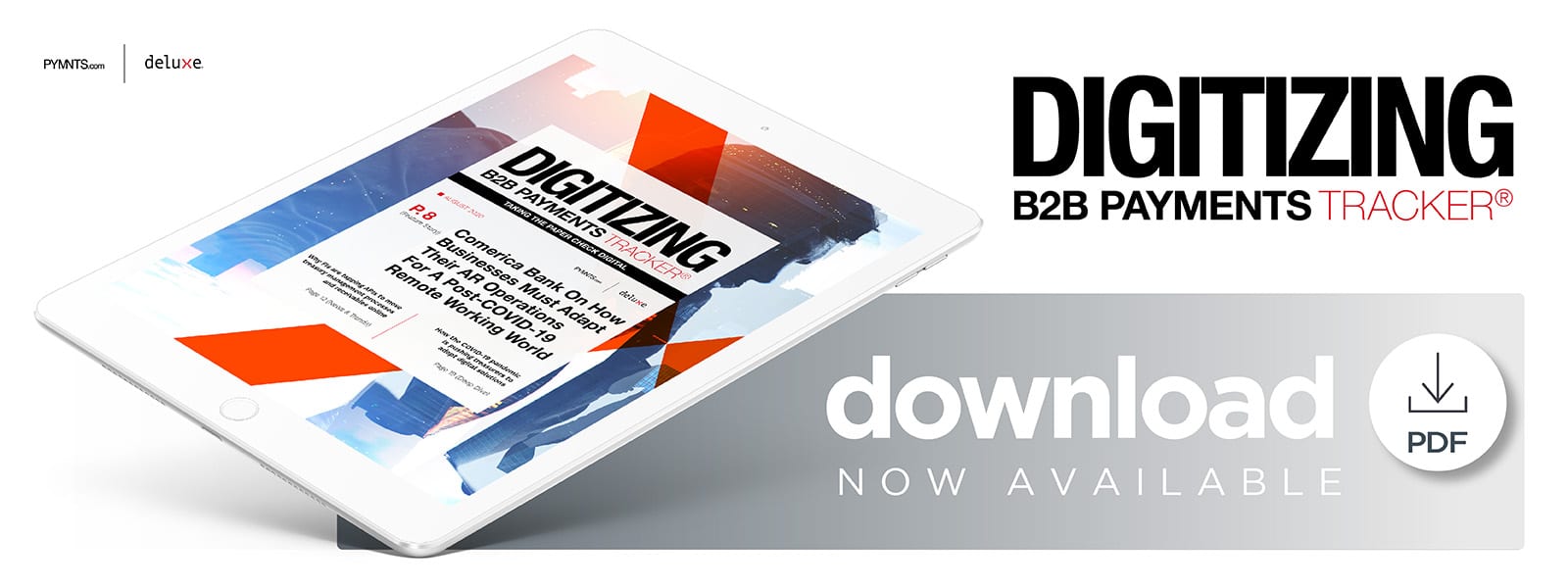Comerica Bank: Finding The Digital Fix For Accounts Receivables

The COVID-19 pandemic has made businesses and banks race to find solutions for immediate problems in recent months, but these firms must also consider how the pandemic could affect their operations in the long run. Many firms — especially small- to mid-sized businesses (SMBs) — have seen their cash flow affected badly as consumer spending dwindles and as outstanding payments from vendors or partners slow or stop completely.
This means that companies are seeking ways that they can stay on top of their accounts more easily, seeking digital solutions that can add a layer of transparency they are currently lacking into their business-to-business (B2B) transactio ns. Many treasury departments still rely on paper checks to finalize payments, for example, something that is becoming more friction-laden the longer the pandemic continues.
ns. Many treasury departments still rely on paper checks to finalize payments, for example, something that is becoming more friction-laden the longer the pandemic continues.
In the latest Digitizing B2B Payments Tracker: Taking The Paper Check Digital®, PYMNTS analyzes how the COVID-19 pandemic is affecting treasurers and what this impact will mean for the future. The Tracker also examines what technologies financial institutions (FIs) are utilizing to move their treasury processes to digital channels and why making such shifts has only become more crucial in the wake of the global health crisis.
Around The B2B Payments World
One bank that is tapping new technologies as a way to shore up its treasury services is Citibank. The FI is seeking to use APIs to help bring its treasury products digital and to reduce its use of manual, paper-based processes that are experiencing increased friction during the ongoing pandemic. The bank will be using these application programming interfaces (APIs) to help connect clients with their accounts more quickly as well as to connect them to digital databases that can more easily provide these clients with insights and information. The move comes as more clients and businesses are now turning first to digital channels for theses processes, Manish Kohli, head of payments and receivables for Citi Treasury and Trade Solutions said in a recent interview.
 Another FI that is adding more flexibility to its treasury payments is People’s United Bank. The bank has announced partnerships with two third-party technology providers to add more digital capabilities into its treasury products, including making use of automated technologies that will aid the speed of payments for its commercial banking clients. It will also rely on these partnerships to allow these clients to submit their invoices digitally in order to reduce both the time and costs attached to finalizing these transactions. This will also help its clients to have a higher degree of transparency into their cash flow and the overall state of their payments, something that is becoming more important as the ongoing global health crisis continues to have negative financial impacts on many businesses in various markets.
Another FI that is adding more flexibility to its treasury payments is People’s United Bank. The bank has announced partnerships with two third-party technology providers to add more digital capabilities into its treasury products, including making use of automated technologies that will aid the speed of payments for its commercial banking clients. It will also rely on these partnerships to allow these clients to submit their invoices digitally in order to reduce both the time and costs attached to finalizing these transactions. This will also help its clients to have a higher degree of transparency into their cash flow and the overall state of their payments, something that is becoming more important as the ongoing global health crisis continues to have negative financial impacts on many businesses in various markets.
Staying on top of their payments and their cash flow projections has become a critical priority for many firms since the onset of the pandemic, in fact. One March study found that 55 percent of treasurers in Europe viewed transparent cash flow forecasting capabilities as the main priority they would be focusing on for the next two to three years, for example. The pandemic’s impact on daily operations also appears to have pushed many clients to begin utilizing more digital tools. The French bank BNP Paribas has noted that 70 percent of its own commercial banking clients are now utilizing electronic tokens to finalize their transactions as opposed to the 13 percent that was doing so in this past February, a fact that indicates a rapid adoption of digital technologies that can aid in both speed and security.
For more on these and other stories, visit the Tracker’s News & Trends.
Why AR Must Change To Match Treasury Departments’ Re mote Working Future
mote Working Future
Most businesses have had to adjust quickly to the ways in which the ongoing COVID-19 pandemic has affected their daily operations, and treasury departments and managers are no exception. This means treasurers have had to make adjustments to the traditional ways in which they manage and finalize their accounts receivable (AR) processes — largely handled manually by human employees. The COVID-19-driven movement to remote work has, therefore, meant these treasurers are searching for online solutions and services better suited to this model, according to Crystal Stephens, vice president and corporate receivables product manager for Comerica Bank. To learn more about why the expansion of remote work could come to broadly affect the way AR processes are conducted in the next few years, visit the Tracker’s Feature Story.
Deep Dive: How The Pandemic Is Accelerating Treasury Departments’ Technological Innovations
Treasurers have been eyeing the applications of new digital technologies for some time: one 2019 study found that 79 percent of treasurers surveyed were examining ways to graft such technologies into their treasury management systems (TMS), for example. These eager treasurers have found themselves hampered by the ongoing reliance on their existing manual processes when it comes to actively developing new digital systems. The pandemic may have finally prodded many of these firms to end that innovation stalemate, however, as the global health crisis continues to expose the weaknesses inherent in widely manual systems. To learn more about how the ongoing pandemic is affecting the need for digital innovation in treasury, visit the Tracker’s Deep Dive.
About The Tracker
The Digitizing B2B Payments Tracker: Taking The Paper Check Digital®, a partnership with Deluxe, examines the latest B2B payments trends and events as well as how businesses are using technologies to keep up with clients’ and consumers’ changing needs.

